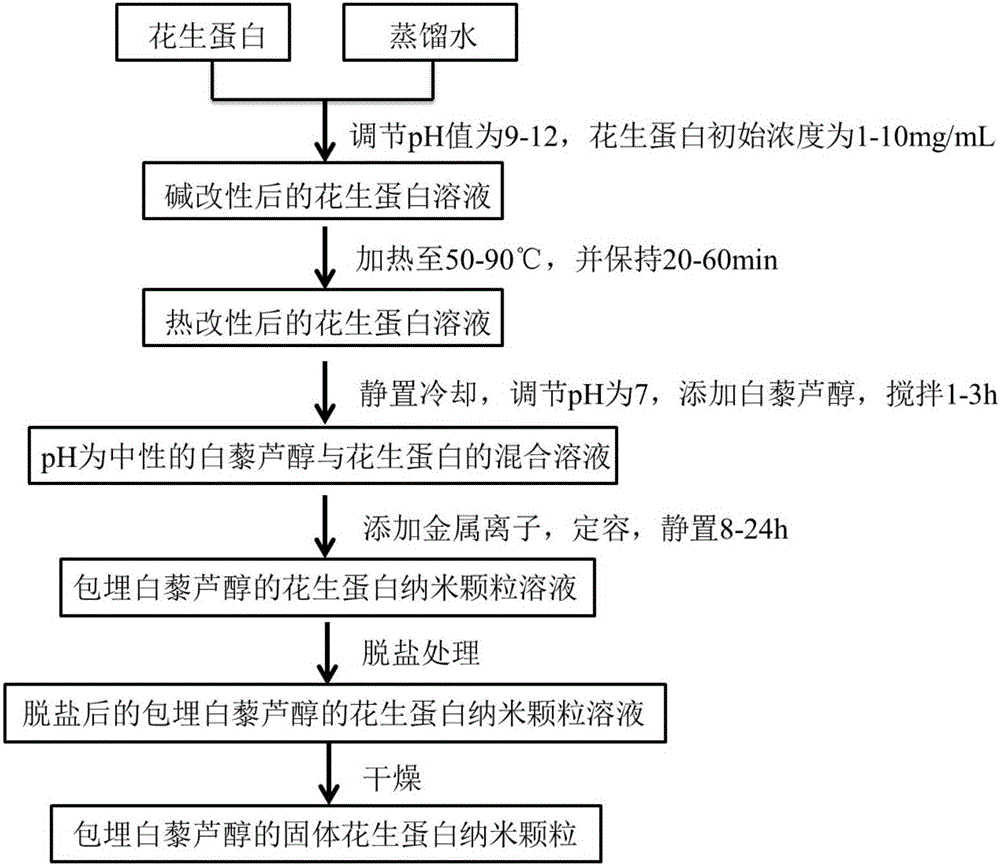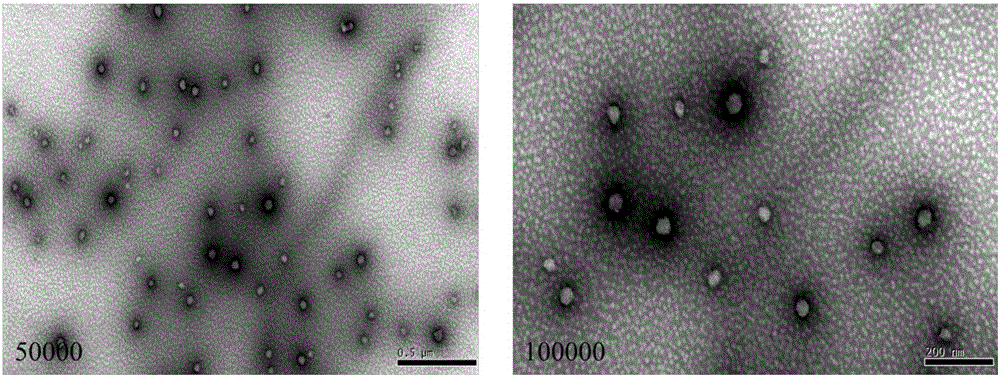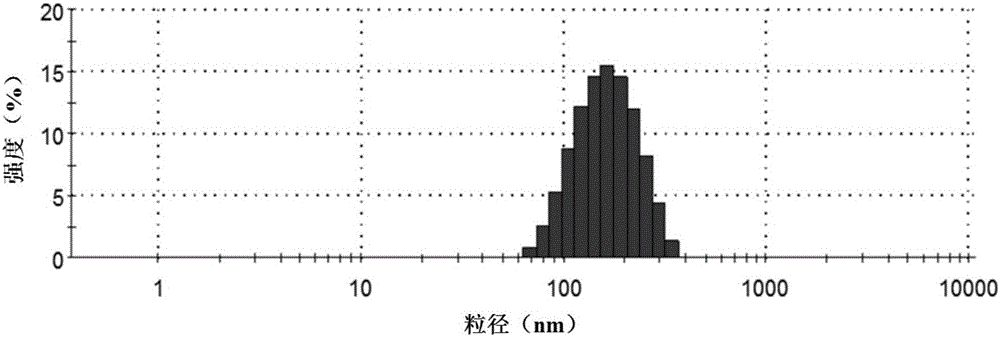Resveratrol embedded peanut protein nano-particles and preparation method thereof
A peanut protein and resveratrol technology, applied in the field of nanoparticles, can solve the problems of generating resveratrol-loaded nanoparticles, exposure of active groups, etc., and achieves the advantages of comprehensive utilization, increased added value, and long sustained release time. Effect
- Summary
- Abstract
- Description
- Claims
- Application Information
AI Technical Summary
Problems solved by technology
Method used
Image
Examples
preparation example Construction
[0038] like figure 1 As shown, the preparation method of the described peanut protein nanoparticles embedded in resveratrol comprises the following steps:
[0039] Step A: preparation of peanut protein solution, mixing peanut protein with a certain amount of distilled water.
[0040] Step B: alkali treatment, adjusting the pH of the peanut protein solution to 9-12 with NaOH.
[0041] Step C: heat treatment, heat the peanut protein solution obtained in step B to 50-90° C., and keep it for 20-60 min.
[0042] Step D: Cool the peanut protein solution obtained in step C at room temperature, and adjust its pH to 7 with HCL.
[0043]Step E: preparation of resveratrol solution: mix resveratrol with 95% ethanol solution under light-shielded conditions.
[0044] Step F: Add the resveratrol solution obtained in step E to the peanut protein solution obtained in step D under the condition of avoiding light, and magnetically stir for 1-3 hours to obtain a mixed solution of resveratrol a...
Embodiment 1
[0054] Weigh 1.49 g of peanut protein extracted by alkali-soluble acid precipitation and dissolve it in 250 mL of distilled water to prepare a peanut protein solution with an initial concentration of 5.96 mg / mL, and adjust the pH to 11 with 0.5M NaOH. The above solution was heated in a water bath at 85° C. for 30 min, allowed to stand and cooled to room temperature, and then adjusted to pH 7.0 with HCL to obtain a modified peanut protein solution.
[0055] Dissolve resveratrol in 95% ethanol solution to obtain a resveratrol mass concentration of 0.0348% resveratrol ethanol solution, add 30mL of the aforementioned resveratrol ethanol solution to the modified peanut protein solution, under dark conditions The reaction was stirred for 1.5h. Add 80 mL of CaCl at a concentration of 5.05 mM to the above solution 2 solution, distilled water to 500mL, so that the protein concentration in the final solution was 1 / 2 of the initial protein concentration, and allowed to stand at room tem...
experiment example 1
[0057] The particle size and morphology of the resveratrol-embedded peanut protein nanoparticles prepared in Example 1 were observed with a transmission electron microscope. A certain amount of the prepared resveratrol-embedded solid peanut protein nanoparticles was redissolved in distilled water to prepare a resveratrol-embedded peanut protein nanoparticle solution with a concentration of 1 mg / mL. Take a drop of the above solution and add it to the copper grid covered with polyvinyl formal resin film, place the copper grid horizontally for 2 to 3 minutes to deposit molecular aggregates on the grid surface, absorb the excess solution on the surface with filter paper, and then add 2% of the solution dropwise The hydrogen peroxide acetic acid glaze solution was used to negatively stain the nanoparticles for 2 minutes, and the copper mesh was placed on the filter paper for 3 minutes to fully stain and absorb the excess dye solution. After drying, observe and take pictures with a t...
PUM
| Property | Measurement | Unit |
|---|---|---|
| The average particle size | aaaaa | aaaaa |
Abstract
Description
Claims
Application Information
 Login to View More
Login to View More - R&D
- Intellectual Property
- Life Sciences
- Materials
- Tech Scout
- Unparalleled Data Quality
- Higher Quality Content
- 60% Fewer Hallucinations
Browse by: Latest US Patents, China's latest patents, Technical Efficacy Thesaurus, Application Domain, Technology Topic, Popular Technical Reports.
© 2025 PatSnap. All rights reserved.Legal|Privacy policy|Modern Slavery Act Transparency Statement|Sitemap|About US| Contact US: help@patsnap.com



